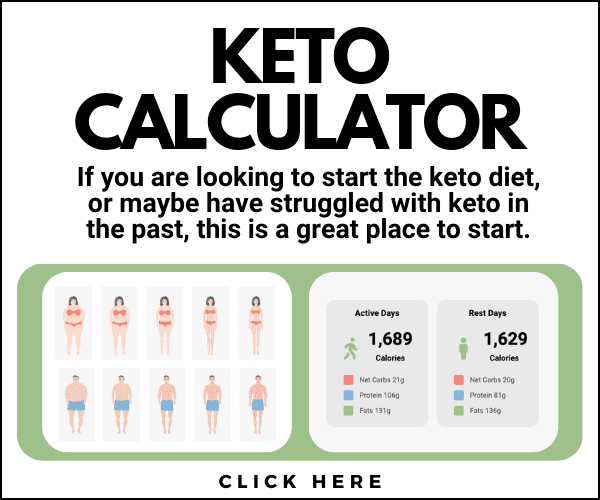
You’ve seen canola oil being used for cooking everywhere, but you’re not entirely sure what it is, how it’s made, or the nutritional value. Nutritionists, health advocates, and food industrialists have been debating about the health effects of canola oil since the 1970s! Some people remove canola oil from their diet and voice concerns over health effects, production methods, and the rest. So, is canola oil bad for you? Let’s find out!
What is Canola Oil?
Canola oil is found in lots of foods, from salad dressings to baked goods. Because it’s so affordable, restaurants often cook with canola oil. In the 1970s, in response to tighter restrictions on rapeseed oil, scientists in Canada used plant cross-breeding to create a crop called canola or Brassica napus L. — an edible type of the rapeseed plant.
Rapeseed oil at the time contained high amounts of erucic acid – an omega-9 fatty acid associated with heart muscle damage in animal studies, and glucosinolates — antinutrients that prevent iodine absorption. The plant they developed had lower levels of erucic acid and glucosinolates.
The term canola comes from ‘Canada’ and ‘ola’ for oil. Canola plant looks almost identical to the rapeseed plant, but it has different nutrients, and its oil is considered safe for human consumption. [1] [2]
With all the different versions of canola developed over the years, canola oil manufacturing surged.
Over 90% of canola crops grown in the United States are genetically modified (GMO). Proponents state canola crops are genetically modified to increase plant tolerance to herbicides and improve oil quality. [3] [4]
Canola crops are also used to create canola meal, which is often made into animal feed.
Canola oil can also be used with plasticizers to make items like tires or as a fuel alternative to diesel.
Seed Cooking
Manufacturers use steam-heated cookers for cooking the seeds, typically for around 15-20 minutes at 176-221℉.
Pressing
Manufacturers use a series of expellers or screw presses to press the cooked canola seeds, which removes around 50-60% of the oil.
Solvent Extraction
The remaining seeds contain around 20% oil. Manufacturers use a chemical called hexane to break down the seeds and extract the remainder of the oil.
Desolventizing
To strip any hexane from the seeds, manufacturers heat the seeds (canola meal) a third time at 203-239℉ using steam exposure.
Oil Processing
Manufacturers refine the extracted oil with various methods, such as exposure to phosphoric acid, filtration through acid-activated clays, and steam distillation.
To make shortening or margarine, manufacturers use a process called hydrogenation, where molecules of hydrogen are pumped into the canola oil to alter the chemical structure. The hydrogenation process extends the shelf life and allows the oil to become solid at room temperature, but it also creates artificial trans fats. Trans fats aren’t like natural fats found in whole foods like meat, fish, and dairy. [5]
Nutrient Profile of Canola Oil

Canola oil isn’t a rich source of nutrients. One tablespoon (15ml) of canola oil provides 124 calories and 12% of the reference daily intake (RDI) for vitamin E and K. [6]
Aside from E and K, canola oil is devoid of nutrients. It’s often touted as a healthy oil due to its low level of saturated fat.
Canola oil has around 7% saturated fat, 28% polyunsaturated fat, and 64% monounsaturated fat. The polyunsaturated fats in canola oil include 21% omega-6 linoleic acid and 11% omega-3 alpha-linolenic acid (ALA).
People following plant-based diets need sources of ALA to increase levels of omega-3 fats EPA and DHA. DHA and EPA are important for brain and heart health. The body can convert the plant-derived ALA into the animal-based DHA and EPA, but research shows the process is highly inefficient. The process is even more inefficient in some people than others, which can lead to problems and deficiencies for some people following a vegan or plant-based diet. Some health advocates believe there are healthier and more natural sources of ALA other than canola oil, such as chia seeds, hemp seeds, and walnuts. Read our informative article for more info on omega-3 fatty acids and the conversion process from ALA to DHA and EPA! [7] [8]
It’s also important to keep in mind that heating methods and the use of chemicals like hexane, as well as high-heat cooking methods like frying, can negatively impact polyunsaturated fats like ALA.
What are the Health Concerns?
People list several concerns about canola oil. Here are some of the most common:
Trans Fats
Heating and the use of chemical solvents during manufacturing damage the oils and lead to higher levels of trans fats and oxidation. Artificial trans fats are associated with obesity, heart disease, and memory loss. Some countries have banned the use of trans fats in their food products. [9]
Canola oil might contain up to 4.2% trans fats. Even in smaller amounts, trans fats are harmful, and the World Health Organization (WHO) called for global elimination of trans fats in foods by 2023. [10] [11]
The United States Food and Drug Administration (FDA) ruled the amount of trans fat in a food item must be clearly labeled. The FDA also allowed food manufacturers to label food 0% trans-fat even if it contains less than 0.5 grams per serving. If you’re consuming several servings, how do you know if you’re getting more than 0.5 grams of trans fat? If you consume lots of packaged, refined, and processed foods, you’re more likely to be eating more canola oil and more trans-fat.
High in Omega-6 Fats
Canola oil is high in omega-6 fats. Omega-6 fats are essential for health, but modern diets are usually especially high in omega-6s and low in omega-3s, which causes an imbalance. An imbalanced ratio of omega-6s to omega-3s spikes inflammation and promotes diseases like heart disease, Alzheimer’s disease, and obesity. The healthiest ratio of omega-6 to omega-3 fat intake is 1:1, but a standard Western diet is approximately 15:1. [12] [13] [14]
Canola oil has an omega-6 to omega-3 ratio of 2:1, which isn’t extremely disproportionate; however, canola oil is believed to be a primary source of dietary omega-6s because it’s present in lots of processed and packaged foods and is higher in omega-6s than omega-3s. [15]
Create a more balanced ratio by replacing canola-rich processed foods with healthy whole food sources of omega-3s like fatty fish.
Largely Genetically Modified (GMO)
GMO foods have been approved for decades, but there isn’t much data on their possible health risks, so many people steer clear.
The term genetic engineering is used to describe a process where manufacturers engineer genetic material in a laboratory to eliminate or introduce specific qualities. Crops like canola and corn have been genetically engineered to be more resistant to pests and herbicides. 90% of canola crops in Canada and the US are genetically engineered. [16] [17]
Genetically engineering plants allowed farmers to douse their canola crops in pesticides to kill weeds without harming the crop. Studies have linked high levels of glyphosate exposure to a heightened risk of hormone disruption, changes in the gut microbiome, and other health problems. [18]
While advocates preach about GMO safety, critics raise questions and concerns about their impact on public health, the environment, property rights, food safety, and crop contamination.
Refining and Processing
The manufacturing process of canola oil involves exposure to chemicals, high heat, bleaching, and deodorizing. Refined oils like soy, corn, and canola are called refined, bleached, and deodorized (RBD) oils. [19]
Refining reduces the nutrient content of oils, including vitamins, antioxidants, and essential fatty acids. [20]
Most available canola oils on the market are highly refined and lacking in antioxidants found in unrefined oils like extra virgin olive oil.
What About the Studies?

The studies on the health benefits of canola oil are sponsored by the canola industry, leaving critics to question conflicts of interest and call for more studies. Some evidence does suggest canola oil could negatively impact health.
Inflammation, Blood Pressure, and Oxidative Stress
Animal studies associate canola oil with oxidative stress and increased inflammation. Animals fed a canola oil diet had a significantly decreased lifespan and sizeable increases in blood pressure. Compounds found during the heating of canola oil spiked inflammatory markers. [21] [22]
Memory Decline and Increased Body Weight
Animal studies also suggest canola oil could negatively impact memory and increase body weight. [23]
Metabolic Syndrome
A 2018 study involving 2,071 adults concluded that among obese or overweight adults, those who typically used canola oil for cooking were more likely to have metabolic syndrome compared to those who never or rarely used it. [24]
Canola industry-funded reviews tout the opposite and link canola oil to beneficial effects on heart disease risk factors, including cholesterol levels. Most of the studies show canola oil is advantageous for the heart use less refined or unheated canola oil rather than the more commonly used refined type.
Advocates of canola oil point to the need to replace saturated fats with unsaturated fats and throw away the coconut oil and bring in the canola oil; however, saturated fat was wrongly demonized and continues to be exonerated in the literature. Read our article for more info on the benefits of natural saturated fat. [25]
For example, an analysis of 458 men concluded those who replaced saturated fats with unsaturated vegetable oils experienced lower ‘bad’ LDL cholesterol levels, but drastically higher rates of heart disease, fatality, and coronary artery disease compared to the control group. [26]
Summary
It’s up to you if you’d like to limit or avoid canola oil.
Some of the concerns surrounding canola oil include:
- Higher in Omega-6s
- Lacking in nutrients
- Animal studies show an association with decreased memory and lifespan, increased inflammation,
- Most canola oil is genetically modified (GMO)
- Lack of data
- More studies are needed on the long-term risks of GMOs and the effects on public health, food safety, the environment, property rights, and crop contamination.
Canola oil is widely used in food processing and cooking, but there are conflicting findings in the research. Until more research and better-quality studies are available, it might be optimal to go for less processed and more natural oils instead, such as coconut oil, grass-fed butter or ghee, duck fat, or tallow. Read our article to find the best oils for the keto diet.
Look for oils with better labels like:
- Organic
- Non-GMO
- Extra virgin
- Cold-pressed
- Expeller-pressed
- Unrefined
Cold-pressed oils don’t use chemical solvents like hexane and involve grinding the source of oil into a paste before pressing it to separate the oil – the old-fashioned way.
With expeller-pressed, manufacturers use a press and intense pressure to squeeze oil from raw materials. The friction and pressure create some heat, so it isn’t considered a ‘cold’ process. Unrefined oils are less processed and retain more nutrients, such as extra virgin olive oil.
References
The European Food Safety Authority (EFSA). (2008). Glucosinolates as undesirable substances in animal feed: Scientific panel on contaminants in the food chain. The EFSA Journal 590, 1-76.
Lin, L., Allemekinders, H., Dansby, A., Campbell, L., Durance-Tod, S., Berger, A., & Jones, P. J. H. (2013). Evidence of health benefits of canola oil. Nutrition Reviews, 71(6), 370-385. DOI: 10.1111/nure.12033
Schafer, M. G., Ross, A. A., Londo, J. P., Burdick, C. A., Lee, E. H., Travers, S. E., Van de Water, P. K., & Sagers, C. L. (2011). The establishment of genetically engineered canola populations in the U.S. PLoS One, 6(10), e25736. DOI: 10.1371/journal.pone.0025736
Canola Encyclopedia Canola Council in Canada. History of Canola Seed Development, History of Canola Seed Development | Canola Encyclopedia (canolacouncil.org)
Wanders, A. J., Zock, P. L., & Brouwer, I. A. (2017). Trans fat intake and its dietary sources in general populations worldwide: A systematic review. Nutrients, 9(8), 840. DOI: 10.3390/nu9080840
United States Department of Agriculture (USDA). Canola, Oil. FoodData Central (usda.gov)
Anderson, B. M., & Ma, D. W. L. (2009). Are all n-3 polyunsaturated fatty acids created equal? Lipids Health Dis, 8, 33. DOI: 10.1186/1476-511X-8-33
Rajaram, S. (2014). Health benefits of plant-derived a-linolenic acid. American Journal of Clinical Nutrition, DOI: 10.3945/ajcn.113.071514
Iqbal, M. P. (2014). Trans fatty acids: A risk factor for cardiovascular disease. Park J Med Sci, 30(1), 194-197. DOI: 10.12669/pjms.301.4525
O’Keefe, S., Gaskins-Wright, S., Wiley, V., & Chen, I. (1994). Levels of trans geometrical isomers of essential fatty acids in some unhydrogenated U.S. vegetable oils. Journal of Food Lipids, https://doi.org/10.1111/j.1745-4522.1994.tb00244.x
Thornton, J. (2018). Eliminate “toxic” trans fats from food by 2023, WHO urges. BMJ, DOI: 10.1136/bmj.k2154
Berger, M. E., Smesny, S., Kim, S-W., Davey, C. G., Rice, S., Sarnyai, Z., Schlogelhofer, M., Schafer, M. R., Berk, M., McGorry, P. D., & Amminger, G. P. (2017). Omega-6 to omega-3 polyunsaturated fatty acid ratio and subsequent mood disorders in young people with at-risk mental states: A 7-year longitudinal study. Transl Psychiatry, 7(8), e1220. DOI: 10.1038/tp.2017.190
Gupta, R., Lakshmy, R., Abraham, R. A., Reddy, K. S., Jeemon, P., & Prabhakaran, D. (2017). Serum omega-6/omega-3 ratio and risk markers for cardiovascular disease in an industrial population of Delhi. Food Nutr Sci, 4(9A): 94-97. DOI: 10.4236/fns.2013.49A1015
Simopoulos, A. P. (2016). An increase in the omega-6/omega-3 fatty acid ratio increases the risk for obesity. Nutrients, 8(3), 128. DOI: 10.3390/nu8030128
Manitoba Canola Growers. Dietary Fat Chart. DIETARY FAT CHART – Manitoba Canola Growers
McHughen, A. (2013). GM crops and foods: What do consumers want to know? Special Issue: Consumer Affairs. https://doi.org/10.4161/gmcr.26532
Maghari, B. M., & Ardekani, A. M. (2011). Genetically modified foods and social concerns. Avicenna J Med Biotechnol, 3(3), 109-117.
Samsel, A., & Seneff, S. (2013). Glyphosate, pathways to modern diseases II: Celiac sprue and gluten intolerance. Interdiscip Toxicol, 6(4), 159-184. DOI: 10.2478/intox-2013-0026
Pal, U. S., Patra, R. K., Sahoo, N. R., Bakhara, C. K., & Panda, M. K. (2015). Effect of refining on quality and composition of sunflower oil. J Food Sci Technol, 52(7), 4613-4618. DOI: 10.1007/s13197-014-1461-0
Aniolowska, M., Zahran, H., & Kita, A. (2016). The effect of pan frying on thermooxidative stability of refined rapeseed oil and professional blend. J Food Sci Technol, 53(1), 712-720. DOI: 10.1007/s13197-015-2020-z
Papazzo, A., Conlan, X., Lexis, L., & Lewandowski, P. (2011). The effect of short-term canola oil ingestion on oxidative stress in the vasculature of stroke-prone spontaneously hypertensive rats. Lipids Health Dis, DOI: 10.1186/1476-511X-10-180
Mboma, J., Leblanc, N., Angers, P., Rocher, A., Vigor, C., Oger, C…Jacques, H. (2018). Effects of cyclic fatty acid monomers from heated vegetable oil on markers of inflammation and oxidative stress in male Wistar rats. J Agric Food Chem, 66(27), 7172-7180. DOI: 10.1021/acs.jafc.8b01836
Lauretti, E., & Pratico, D. (2017). Effect of canola oil consumption on memory, synapse and neuropathology in the triple transgenic mouse model of Alzheimer’s disease. Sci Rep, DOI: 10.1038/s41598-017-17373-3
Sun, Y., Magnussen, C. G., Dwyer, T., Oddy, W. H., Venn, A. J., & Smith, K. J. (2018). Cross-sectional associations between dietary fat-related behaviors and continuous metabolic syndrome score among young Australian adults. Nutrients, DOI: 10.3390/nu10080972
Matthaus, B., Ozcan, M. M., & Juhaimi, F. A. (2016). Some rape/canola seed oils: Fatty acid composition and tocopherols. Z Naturforsch C J Biosci, 71(3-4), 73-7. DOI: 10.1515/znc-2016-0003
Ramsden, C. E., Zamora, D., Leelarthaepin, B., Majchrzak-Hong, S. F., Faurot, K. R., Suchindran, C. M…Hibbeln, J. R. (2013). Use of dietary linoleic acid for secondary prevention of coronary heart disease and death: Evaluation of recovered data from the Sydney Diet Heart Study and updated meta-analysis. BMJ, DOI: 10.1136/bmj.e8707











